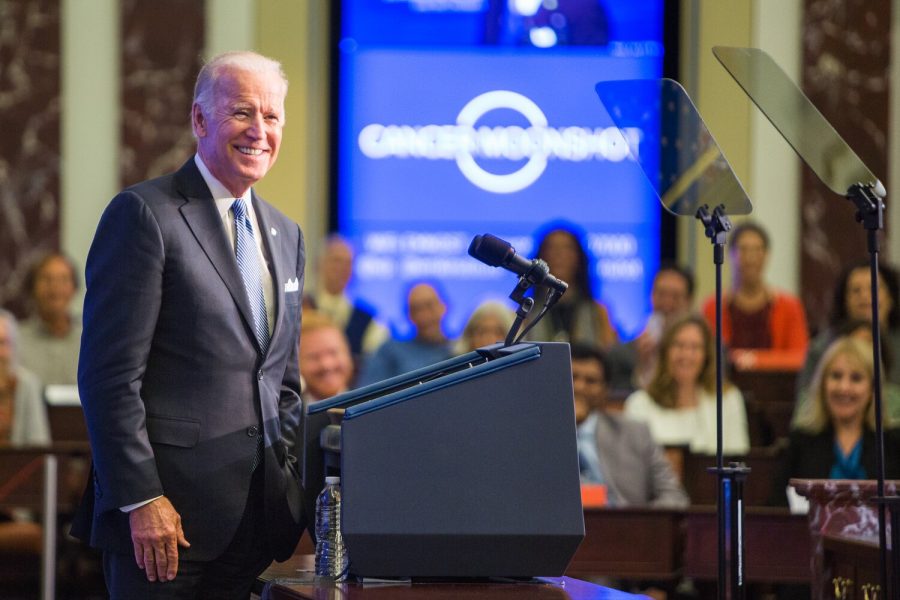Biden’s Student Debt Plan is a Band-Aid, Not a Solution
March 20, 2023
Recently, much ado has been made in the news about the ongoing Supreme Court cases determining the legality of Biden’s latest executive order on student debt. This plan, which works alongside the Department of Education and could see 43 million applicants, would provide up to $10,000 in debt cancellation for low to middle class students, and up to $20,000 for students with Pell Grants (granted to students with high financial needs for college). The plan is expected to cost $400,000,000,000 (that’s 400 billion dollars), which is more than four times the Department of Education’s budget for the ‘23 fiscal year. Needless to say, it’s an expensive plan.
But many are saying it’s worth it. With almost 1.76 trillion dollars in debt across the country, student debt is one of America’s greatest financial worries. In a market where going to college often feels like the only path to a successful career (although this is certainly not true), many students are encouraged to take on debt to pay for university. Tuition costs continue to outpace the inflation of the dollar by considerable margins. Between 2010 and 2020, the dollar saw an average inflation rate of 2.46% a year. By contrast, the increase in college tuition was 4.63% a year on average. In fact, since 1963, university tuition has increased more than 747.8%: even after adjusting for inflation.
Not only is college getting more expensive, but life is too. As the cost of living increases in the wake of significant inflation, our every day needs are becoming more expensive. This makes student loans even more of a burden, as they constantly sap money away from already-burdened graduates who are dealing with the fallout of the pandemic. Many borrowers find that interest payments quickly add up, and end up feeling trapped by loans that seem to last forever. The costly monthly payments leave many of them stuck in place, so to speak. The Federal Reserve estimated that our average student borrower pays $222 every single month on loan interest payments alone. Clearly, America has a student loan crisis.
That being said, Biden’s plan is not the answer. The executive order is a step in the right direction, but it is a band-aid, not a solution. Even if the administration somehow canceled all 1.76 trillion dollars that Americans share in student debt, the problem would not be over: it would merely be delayed. Tuition costs will continue to rise, and in fact, they might start to rise faster. Much like how insurance companies have pushed up the cost of healthcare, large-scale student loan forgiveness might incentivise colleges to drive up their costs even higher. After all, if borrowers can expect occasional (but crucially, not planned or legislated) relief from the executive office, they might take out more loans to pay for college. This, in turn, might make some universities increase tuition further to take advantage of a greater willingness to borrow on the part of students. Of course, this is speculation, but it’s very important to consider the long-term implications of the forgiveness order.
Beyond just that, something about the relief plan seems just a little unfair. Students who have successfully paid their loans off recently: often after diligently working to pay off their student loans and sacrificing their time, spending money, and maybe even living situation to do so: are left in the dirt. This plan clearly does not reward their hard work or do anything to help those who have struggled and suffered under student debt in the past.
As a Westwood senior and soon-to-be college student, I have to wonder what’s going to happen to me. If Biden cancels 400 billion in student debt, fine. But the costs of tuition are still skyrocketing, the cost of living will continue to increase, and I, like many Americans before me, am going to have to take out student loans. Maybe a lot of student loans. Based on the data, my year of graduates will certainly need more in loans than students ever have before. And next year, the next prospective students will face the same dilemma, but with even higher costs. They, in turn, will be forced to borrow even more than the year before them. This 400 billion dollar relief spree isn’t going to do anything for the next generation, or even the next year, of university attendees. This executive order does not fix any systemic problems or repair any broken institutions. In short, it is a band-aid and not a solution.
Now don’t get me wrong, there are some major benefits to relieving student debt here and now. But despite the benefits of such a plan, Biden’s student debt forgiveness package does nothing for the generations of students who will soon enroll in college and face even greater challenges than their predecessors. And although the plan will be a huge relief for recent grads and even current students, it will leave behind a system of tuition that is still deeply flawed and will continue to fail the young Americans of today and tomorrow.



